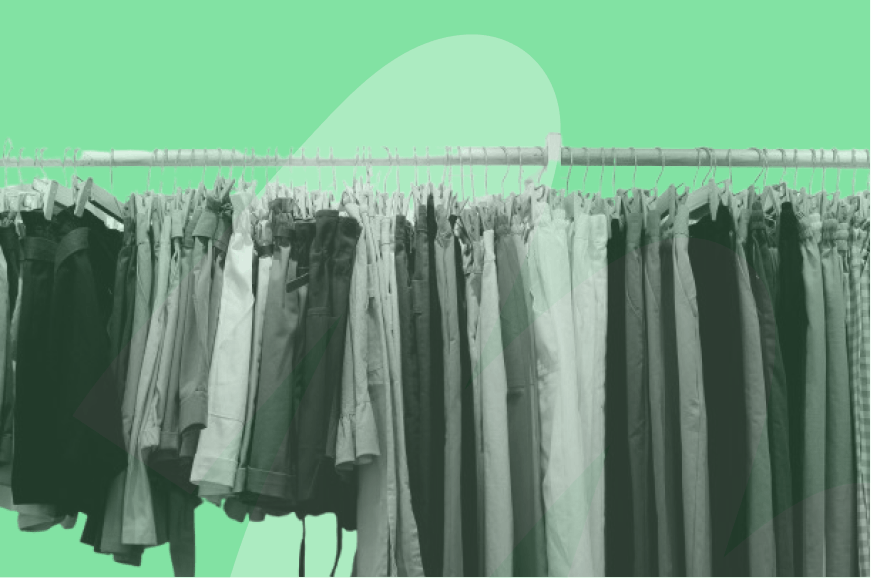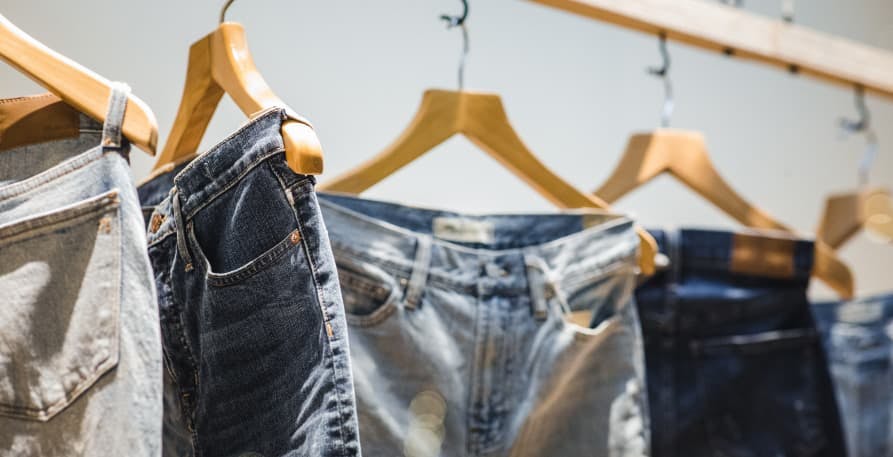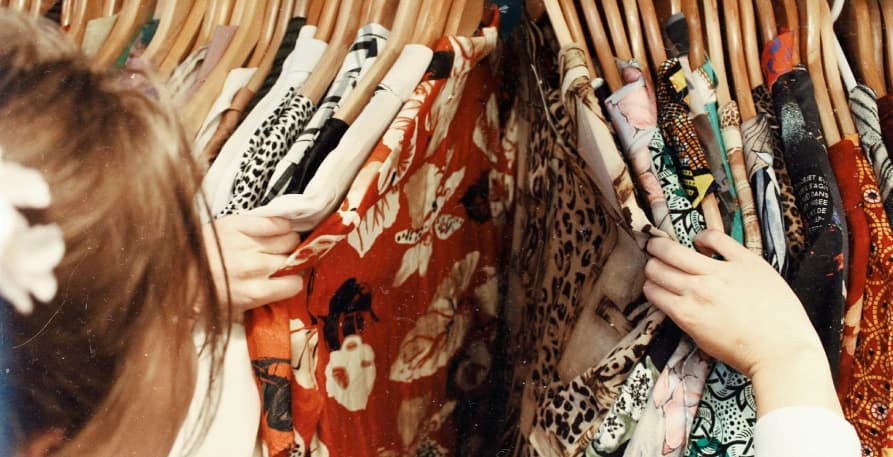ESG / CSR
Industries
All You Need to Know About Fast Fashion



Key Topics You’ll Learn About in This Article
The history and rise of fast fashion
How slow fashion and other sustainable alternatives have gained prominence in the fashion industry
Ways to decrease your own environmental impact with eco-friendly fashion choices
What do you need to know about fast fashion before you head off to the mall for your well-deserved shopping spree?
It turns out that customers, and even companies – are being made aware of the harsh carbon footprint that fast fashion leaves behind.
Clothing retailers, trying to create a steady consumer base in an age where newer is better and what constitutes as, “in style” keeps getting shorter and shorter – often turn to fast fashion to keep profits high, customers seeking the newest fashion trends happy, and to maintain industrialization costs despite how it negatively affects the environment.
Fast fashion does absolutely nothing to promote corporate sustainability.
So, why do companies keep promoting fast fashion – and why we do keep buying into it?
In this article, we'll explain what fast fashion is, why it's bad for the environment, and more sustainable options in place of the fast fashion industry.
What is Fast Fashion?
Fast fashion is mass produced, cost-effective clothing that mimics the latest fashion trends and are quickly produced in order to promote a company’s stylistic and modernized awareness for the consumer.
Fast fashion gets its name from its business design – where everything is done at rapid fire speed to keep up with the latest design in line with the global fashion industry.
The overview cards below will reveal some of the characteristics of fast fashion and how they harm the environment:
Rapid Production Cycles
Fast fashion relies on constant production, increasing energy use, emissions, and pressure on natural resources.
Poor Garment Quality
Low-quality materials wear out quickly, leading to frequent disposal and massive textile waste.
Water Pollution
Dyeing and treating fabrics release toxic chemicals into rivers, contaminating ecosystems and drinking water.
Global Shipping Emissions
Clothing is transported across continents, contributing significantly to carbon emissions.
Limited Recyclability
Most fast fashion garments are made from blended fabrics that are difficult or impossible to recycle.
Overconsumption Culture
Ultra-low prices encourage excessive buying, normalizing disposable clothing habits.
This means that fast fashion retailers often value more disposable fashion or clothing production that can be made and sent to retail stores quickly and sold at low prices to match current trends as opposed to mitigating poor quality garments or textile waste.
Fast fashion companies target their audience around young people looking for new styles of clothing with low quality at an affordable price to be worn for a few wears, such as people attending Taylor Swift's Eras Tour or a costume party. These apparel companies will often produce these new clothes in excess to meet consumer demand.
As a result, fast fashion often encourages consumers to engage with ultra fast fashion companies and promote poor environmental circumstances within the textile industry – despite the fact that fast fashion consumers often remain unaware of their negative impact.
How Did Fast Fashion Start?
The term, “fast fashion” was first used at the beginning of the 1990s, when Zara opened in New York.
The New York Times used the phrase, “fast fashion” to explain Zara’s goal to take a fashion piece from the stages of being designed to hanging on a clothing store rack in a mere 15 days – as these brands then began producing clothing at an unprecedented, otherwise known as "micro seasons".
Hence the term fast fashion – a garment of clothing not highly anticipated, and that can be produced quickly without much notice or genuine thought to how that industrialization may negatively affect other sectors, such as the environment.

Why Did Fast Fashion Become So Popular?
As consumerism and capitalism dominated the culture of the United States – fast fashion became an easy way to feed into these stereotypical American ideals: which is that "more clothes", "new clothes", and "cheaper clothes" is better.
Think about it: a fifteen-year-old in sophomore geometry class isn’t going to know if their classmate’s t-shirt was bought from a sustainable clothing brand – but they will immediately recognize if it’s a popular style from fast fashion brand like Topshop, Urban Outfitters, or Fashion Nova.
The vertical timeline below will reveal how fast fashion became as popular as it is today in the 2020s:
1. Mass Production & Globalization 🏭🌍
Advances in manufacturing and global supply chains allowed clothing to be produced quickly and cheaply, laying the foundation for fast fashion.
2. Lower Costs & Cheap Labor 💰
Brands outsourced production to countries with lower labor costs, drastically reducing prices and making trendy clothing more accessible.
3. Rapid Trend Cycles 👗⏱️
Instead of seasonal collections, brands began releasing new styles weekly—encouraging constant purchasing to keep up with trends.
4. Rise of Online Shopping 🛒💻
E-commerce removed physical barriers, allowing consumers to browse, purchase, and receive new clothing faster than ever before.
5. Social Media Influence 📱🔥
Platforms like Instagram and TikTok accelerated trend turnover, normalizing outfit repetition avoidance and impulse buying.
6. Ultra-Fast Fashion Brands 🚀
Brands such as Shein perfected data-driven production—replicating trends in days and flooding the market with low-cost garments.
7. Overconsumption in the 2020s ♻️⚠️
By the 2020s, fast fashion became mainstream—driven by affordability and speed, but at the cost of environmental damage and textile waste.
In other words, fast fashion subscribes to the American notion that quantity is better than quality, which is in line with the notorious shopping habits in the United States.
It used to be considered “cooler” for a millennial or Gen Z to be wearing something trendy than sustainable, but in recent years as the environmental impact of the fast fashion model and sustainable fashion have come to light, fast fashion's business models aren't as widely accepted as they used to be.

Why Is Fast Fashion Bad for the Environment?
Fast fashion is bad for the environment as it makes use of toxic synthetic fabrics, relies on cheap labor, mitigates the importance of mindful manufacturing, encourages discarded clothing, and is contingent on inexpensive, accelerated production.
As a result fast fashion promotes unnecessary, excessive consumption – which remains one of the keys to solving climate change. Therefore, more clothing on behalf of the fast fashion industry may seem better for fast fashion consumers in the short term, but in the long-haul – this "new clothing" will continue to harm the planet.
In fact, the production of textiles in the clothing industry amounts to a massive 1.2 billion tons of greenhouse gas emissions every year – that's more GHG emissions than international flights emit on an annual basis.
Fast Fashion Impact on Environment
Here are some more reasons why fast fashion is bad for the environment:
- Encourages Excess Consumerism – Especially within the U.S., it is more appealing for someone to be able to go to a store and buy 10 new dresses for the same price as one dress from a more sustainable clothing store. The life cycle of the clothing garment isn’t the predominant thought that comes to mind when shopping – instead, it's, "how much can I buy with the little money that I have?"
- Waste Generation – 92 million tonnes of textile waste is produced every year, where as a result – much of the unwanted clothing from first-world countries is often deferred to the Global South. While this may help developing countries to avoid the expenses associated with garment production, it still isn't good for the planet.
- Use of Non-Renewable Resources – From the use of fossil fuels to power in-store operations or a garment factory, to water usage (where the EU estimates that 20% of global freshwater pollution is a direct result of the fast fashion industry), use of microplastics, excess energy consumption, and lack of closed loop recycling, the non-biodegradable nature of fast fashion makes it a hard pass for the planet.
- Polluting via Synthetic Fibers – Fast fashion makes use of synthetic fibers such as polyester, nylon and acrylic – which aren’t biodegradable friendly and can end up in our oceans and harm aquatic life. In fact, around one third of microplastics in the ocean are from the materials used to produce fast fashion. The process of creating these plastic fibers for fast fashion demands a large use of energy, such as petroleum and other gasses that emit harmful substances into the atmosphere.
- Water Usage – Unbeknownst to most, the fashion industry uses nearly 700 gallons of water to produce one 1 cotton shirt – and the process of dying clothing is toxic to the environment as all, as residual dye is often outsourced into clean water resources like streams or rivers. According to the UNEP and the Ellen MacArthur Foundation, the fashion industry uses around 93 billion cubic meters of water every year.
This problem of quantity over quality in fast fashion continues to support the business model of fast fashion, which is an inevitably deleterious cycle that only adds on to the existing textile waste created by clothing every day.
Ultimately, fast fashion provokes the need to use non-renewable resources, which in turn causes a more carbon emissions, greenhouse gases and large amounts of water usage.

What Is Slow Fashion?
Slow fashion is frankly the exact opposite of fast fashion, as it is garnered towards the ethical consumer seeking to avoid the negative impacts created on behalf of massive fast fashion garment factories – and ultimately serves as an attempt to counteract the negative effects of fast fashion.
Slow fashion strives to reduce superfluous, accelerated production, poor supply chains, and continuous consumption – by respecting their employees as well as the environment and animals.
Examples of Slow Fashion
Examples of slow fashion brands & practices include:
- Patagonia
- Reformation
- Amour Vert
- Second hand or thrift-shopping
It is important to note that both a second-hand dress from a thrift shop or a $10,000 dress made by an independent designers can both be considered a form of sustainable or slow fashion. This is because slow fashion is all about how the garment is made and it's process including mindfulness towards the environment, such as by seeking to use natural fibers and recycling maters.
Differences Between Fast and Slow Fashion
| Aspect | Fast Fashion | Slow Fashion |
|---|---|---|
| Materials | Uses synthetic fibers and non-biodegradable materials which can pollute the planet. | Seeks to use natural fibers and upcycled or recycled materials whenever possible. |
| Consumption | Encourages consumers to over-consume and perpetuates the ideal of quantity over quality. | Shows consumers the benefit of having fewer, but higher quality garments. |
| Price and Quality | Often cheap in both price and quality. | Bound to be better quality and possibly a little more expensive than fast fashion items. |

Which Clothing Brands Are Most Sustainable for the Environment?
If you’re able to do some searching on the internet before shopping to see which clothing brands are more sustainable and worth purchasing – the planet will thank you.
And it’s becoming easier too – as most of our shopping is being done online anyways as e-commerce continues to grow.
Luckily, at Greenly we’re making it even easier for you – and we’ve compiled a list of the most affordable, sustainable fashion brands for you to check out next time you’re shopping online or in person for clothes!
Here are 5 examples of sustainable fashion brands:
1. For Days
For Days is the future of sustainable fashion – every piece of clothing the sell is made of recyclable materials, and they even offer for their garments to be returned after you’ve outgrown it to promote a closed-loop system for sustainability.
What is a closed-loop system? A closed loop system is the concept and method of keeping already made garments in circulation for as long as possible – for instancing, repairing already existing garments or thrift shopping.
The summary cards below will reveal the main benefits of a closed-loop system for the fashion industry:
2. ABLE
ABLE is a female empowered, fair-trade sustainable clothing brand that aims to create equal opportunities around the world.
This slow fashion brand accomplishes this goal by abiding to responsible sourcing, and even cooler – all the bags, shoes, and day-to-day garments are made by women who have faced extraordinary circumstances.
ABLE also allows their customers to try the clothes before they buy them, even though they are an online retailer. By doing this, ABLE prevents textile waste – because people often purchase the wrong size clothing, and are too lazy to return it.
3. Patagonia
Patagonia is a great choice for sustainable clothing as they strive to lessen their environmental impact and market to their customers the importance of only buying what you need.
The vertical timeline below will reveal the process in how Patagonia ensures their clothing remains sustainable long-term:
1. Responsible Material Sourcing 🌱
Patagonia prioritizes recycled, organic, and responsibly sourced materials to reduce environmental impact from the very start.
2. Ethical & Durable Design 🧵
Products are designed to be durable, functional, and timeless, reducing the need for frequent replacement.
3. Transparent & Fair Manufacturing 🏭
The company works with audited factories to ensure fair labor practices and environmentally responsible production.
4. Long-Term Product Use ♻️
Patagonia encourages customers to wear their clothing for as long as possible, actively discouraging overconsumption.
5. Repair & Reuse Program 🪡
Customers can send damaged items back to Patagonia for repair, preventing garments from being discarded too early and reducing waste.
6. Circular End-of-Life Solutions 🔄
When items can no longer be repaired, Patagonia promotes resale, recycling, or responsible disposal to minimize landfill waste.
Patagonia also uses recycled materials to avoid textile waste, and offers free-repair on any Patagonia garment.
4. Levi’s
Did you know that this beloved denim brand is also sustainable?
Levi’s has made it their mission to sustainably source their cotton, reduce water waste, and increase their use of recycled materials.
Overall, it is smart to read the labels of the clothes you plan to buy before heading to the checkout counter – more sustainable fabrics include wild silk, organic cotton, linen, hemp and lyocell.
Should You Stop Buying Fast Fashion All Together?
Ultimately, while fast fashion may seem like the most approachable way to keep up with new clothing lines and styles, fast fashion will continue to harm garment workers and the garment industry as a whole.
This is because as of 2026, several fast fashion brands such as H&M and Gap have been accused of gender based violence in the workplace, further demonstrating that fast fashion often aligns with less-than-ideal working conditions.
The overview cards below will reveal some of the reasons to stop buying fast fashion altogether:
High Carbon Emissions
Fast fashion relies on energy-intensive manufacturing and global shipping, producing massive greenhouse gas emissions.
Excessive Water Use
Producing cheap clothing requires enormous amounts of water, contributing to water scarcity and polluted waterways.
Toxic Chemicals
Dyes and chemical treatments used in fast fashion contaminate soil and water, harming ecosystems and communities.
Textile Waste
Low-quality garments are often worn only a few times before being discarded and sent to landfills or incinerators.
Unethical Labor Practices
Fast fashion is linked to low wages, unsafe working conditions, and labor exploitation in garment-producing countries.
Overconsumption Culture
Rapid trend cycles encourage constant buying and disposability, normalizing unsustainable consumption habits.
In addition to this, fast fashion companies like Shein continue to receive financial recognition – having recently raised $2 billion dollars in their latest fundraising round. The more we continue to support these fast fashion brands, the more opportunities they will have to develop new collections and encourage low quality fashion retailers to shoot for the stars – when what we really need is more sustainable fashion business models taking the lead.
These days, there are so many options for sustainable clothing that don’t break the bank that the need for fast fashion isn’t as necessary as it once was. However, American holidays like Halloween still call the need for quick, cheap costume ideas that most will still turn to fast fashion for – which isn't good, but at least it's better than buying fast fashion clothing for every occasion.
Think of fast fashion like eating in moderation. It’s not going to kill you to eat pasta or chocolate every now and then – but it’s best to not get in the habit of doing it on a daily basis.

3 Ways You Can Help the Environment (Even if You Still Buy Fast Fashion)
Can’t afford high quality, sustainable clothing or feeling like fast fashion brands are the only fashion companies with new styles you can afford?
Here are a few tips on some things you can do to make the most of your fast fashion pieces so that they don’t go to waste or straight to landfill.
1. Thrift Shopping
Thrift shopping has become more popular than ever – but did you know that it’s also better for the environment?
Thrift shopping promotes the concept of second-hand fast fashion – which lowers the costs of clothing production all while improving the environment by reducing textile waste.
The interactive flip cards below (move cursor over card to flip) will reveal the benefits of thrift shopping:
Thrift shopping is a great alternative to fast fashion that is better for both your wallet and the planet!


2. Donation
Do a closet clean out!
The time-old motto really is the best way to decide if you really still need to keep something in your closet – if you haven’t worn it in a year, the chances you’ll wear it in the next year are slim.
Skim through the hangers in your closet, because the truth is – a lot of us hoard clothing that we don’t wear often enough to keep in our wardrobe.
There is someone out there who could really use whatever you aren’t wearing, and then any fast fashion pieces that you bought won’t really be going to waste – they will be reused and recycled for a worthy purpose.
3. Ensure the piece you buy will be worn
Many of us living in our twenties in a big city can’t afford to shop at some of the sustainable fashion stores mentioned above – meaning that admittedly, much of our wardrobe is from Forever 21 or other fast fashion brands
Does make us contributors to fast fashion? Yes and no.
While many of us have contributed to purchasing fast fashion in the past – some of us still own and wear many pieces of clothing we bought from stores like Forever 21 several years ago.
Quantity over quality in general isn’t good when it comes to promoting sustainability in fashion, but because some of us have several pieces from Forever 21 – they don’t get worn as often as they would if we had fewer, higher quality pieces of clothing.
If the cheap, ethically unsustainable basics you buy will be worn for years to come – they ultimately become more "sustainable" as the clothes will be used to their maximum capacity.
What About Greenly?
If reading this article about fast fashion and its environmental impact has made you interested in reducing your carbon emissions to further fight against climate change – Greenly can help you!
At Greenly we can help you to assess your company’s carbon footprint, and then give you the tools you need to cut down on emissions. We offer a free demo for you to better understand our platform and all that it has to offer – including assistance with boosting supplier engagement, personalized assistance, and new ways to involve your employees.
Click here to learn more about Greenly and how we can help you reduce your carbon footprint.








